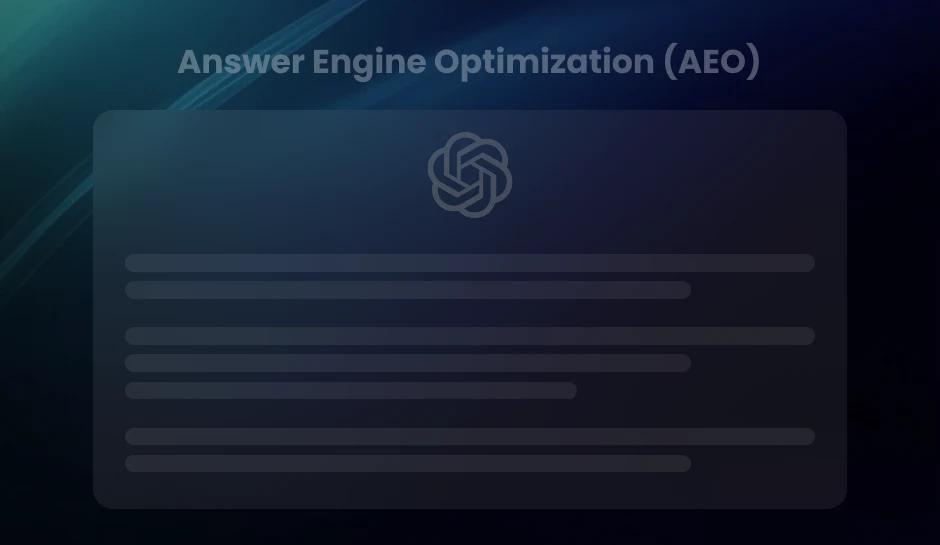
Attribution Analysis with Python: Explore Marketing Insights That Drive Revenue
This guide covers data preparation, model selection, and real-world insights to help you maximize ROI from your marketing channels. Learn to use Python for marketing attribution analysis and uncover what drives conversions.
Attribution in marketing refers to identifying which touchpoints along the customer journey contribute to a desired conversion. Whether it’s a display ad, an email campaign, or a product review, every interaction leaves a trace. Attribution analysis assigns value to those interactions, allowing businesses to determine how effectively each channel contributes to sales or other key performance indicators.
Accurate attribution analysis informs strategic decision-making by revealing what drives growth and, just as critically, what doesn’t. With precise data, marketers can allocate budgets more intelligently, optimize campaign performance, and forecast outcomes more confidently.
However, attributing outcomes to specific marketing actions is not always straightforward. Customer journeys are complex, often spanning multiple channels and devices. Disentangling the effect of each touchpoint from the rest requires a methodological approach. That’s where Python enters the picture. Through robust libraries and customizable models, Python equips analysts with tools to tackle these complexities, quantify channel impact, and elevate marketing analytics beyond vanity metrics.
Python Libraries Powering Attribution Analysis
Python’s Place in the Data Science Stack
Python sits at the core of modern data science workflows. Its readability, extensive ecosystem, and integration capabilities have made it the go-to language for data-driven marketing analytics, including attribution analysis. Whether parsing terabytes of raw customer data or implementing complex attribution models, Python provides the tools to go from concept to deployable solutions.
Top Python Libraries for Attribution Analysis
- Pandas
- NumPy
- Matplotlib and Seaborn
- Scikit-learn
- Stats models
- NetworkX
Pandas simplifies the handling of structured data. Analysts can filter, group, pivot, and merge with minimal code. For attribution workflows, Pandas consolidates touchpoint data, constructs user journeys, and prepares datasets for modeling.
NumPy accelerates numerical computations. Its arrays and vectorized operations offer performance improvements over native Python lists, particularly when handling large matrices or performing matrix algebra, which are common in attribution models like Markov chains.
These libraries generate rich visualizations for attribution reporting. With Matplotlib’s low-level control and Seaborn’s high-level syntax, analysts can create funnel charts, conversion path diagrams, and weighted contribution plots that illustrate marketing performance across channels.
Scikit-learn provides implementations of logistic regression, random forests, and other estimators used in algorithmic attribution. It supports training, cross-validation, and model evaluation in a unified interface.
are indispensable for analysts needing deep statistical modeling. They allow for precise regression diagnostics, hypothesis testing, and statistical summaries when validating attribution model outputs.
NetworkX supports the construction of transition matrices and state-based models for graph-based modeling of user paths. This enables probabilistic attribution models, such as Markov and Shapley methods, that reflect real-world user behavior.
Why Python Enhances Attribution Accuracy and Flexibility
Python’s expansive library ecosystem creates a cohesive analytical environment. Analysts can preprocess massive datasets, implement heuristic and statistical models, run machine learning algorithms, and visualize results without switching tools or environments. This end-to-end integration increases productivity, reduces opportunities for error, and accelerates iteration.
Python also supports extensibility. Need to build a custom U-shaped attribution algorithm? Develop a time-sensitive decay model that weighs recent clicks more heavily. Python makes it straightforward to prototype, test, and deploy those approaches. And because it’s widely used, strong community support and documentation back every step.
From exploratory data analysis to real-time attribution pipelines, Python equips marketing analysts with a full arsenal. The tools aren’t just accessible and adaptable, scalable, and production-ready.
Transform Raw Logs into Insight: Loading and Preparing Data for Attribution Analysis in Python
Reading and Importing Data with Python
Attribution analysis starts with data access, and Python offers several robust tools to do just that. The pandas library dominates this step. It seamlessly supports file formats like CSV, JSON, Excel, and SQL databases. For instance, importing a CSV can be done as simply as:
import pandas as pd
df = pd.read_csv(‘user_journey_logs.csv’)
To connect directly to SQL databases, analysts turn to SQLAlchemy or sqlite3 in combination with pandas:
import sqlite3
conn = sqlite3.connect(‘marketing.db’)
df = pd.read_sql_query(“SELECT * FROM touchpoints”, conn)
Dask offers a scalable alternative for larger datasets that parallelizes operations across cores, making it suitable for high-volume, multi-channel marketing data.
Data Cleaning and Preparation Techniques
The input data must be coherent before any attribution model can operate meaningfully. Sessions must be ordered chronologically, timestamps normalized, and campaign sources standardized. Here’s how typical operations proceed:
- Timestamp normalization:
Convert all date fields to uniform datetime objects with pd.to_datetime().
Consistent casing for categorical fields: Apply .str.lower() to campaign sources or channels to ensure consistent matching.
Sorting and grouping:
Sort data chronologically by user and session, and group touchpoints by user ID to reconstruct complete journeys.
Many datasets require additional transformations to reconstruct sessions. For instance, time deltas between clicks may define where one session ends and another begins. This can be defined dynamically using the shift() and diff() functions in pandas:
df[‘time_diff’] = df.groupby(‘user_id’)[‘timestamp’].diff()
df[‘new_session’] = df[‘time_diff’] > pd.Timedelta(minutes=30)
Addressing Missing Values and Outliers
Attribution models rely on the clean continuity of data across user journeys. Missing or anomalous values introduce noise and misattribution. Python efficiently detects, reports, and resolves such data quality issues.
- Detect missing values:
- Fill or drop entries:
- Outlier detection:
Use df.isnull().sum() to identify columns with missing entries.
Choose df.dropna() to remove or df.fillna(method=’ffill’) to backfill values depending on context (e.g., campaign name or session score).
Apply the IQR method, Z-score, or visualization using seaborns boxplot() to flag and treat extreme values in engagement metrics like session duration or conversions.
The IQR method identifies outliers where values lie outside 1.5 times the interquartile range for numeric data. Implementing this can be done with native pandas syntax:
Q1 = df[‘session_duration’].quantile(0.25)
Q3 = df[‘session_duration’].quantile(0.75)
IQR = Q3 – Q1
df = df[(df[‘session_duration’] >= Q1 – 1.5*IQR) & (df[‘session_duration’] <= Q3 1.5*IQR)]
Effective attribution depends on starting with a dataset that reflects each user’s journey without ambiguity or corruption. This step defines model accuracy before any algorithm is ever applied.
Pro Tip- Before modeling, visualize user journeys using Sankey diagrams or session heatmaps. Tools like Plotly or Matplotlib help you quickly spot anomalies, drop-offs, or unexpected path patterns, allowing for more informed data-cleaning decisions.
Marketing Attribution with Regression Models in Python
Types of Regression Models and Their Use in Attribution
- Linear Regression:
- Ridge and Lasso Regression:
- Logistic Regression:
- Poisson and Negative Binomial Regression:
Useful when the relationship between independent variables (marketing channels) and the dependent variable (conversion or revenue) is additive and continuous. It produces coefficients that represent each channel’s effect size.
These are regularized alternatives that handle multicollinearity. Ridge penalizes coefficients to shrink less influential variables, while Lasso can eliminate them, which is especially useful when working with high-dimensional data.
Applied when the dependent variable is binary, such as in lead conversions. It models the probability that a customer will convert, conditioned on exposure to specific channels.
Suitable for modeling count data like number of clicks or conversions, particularly when data exhibits over-dispersion.
Building and Training Regression Models in Python
Model training can begin once the dataset is structured with encoded touchpoints, response variables, and interaction terms. Python’s sci-kit-learn library provides the tools for efficiently building and validating regression models.
Interpreting the Results of Regression Analysis
The model’s coefficients quantify each channel’s marginal impact. In linear regression, a coefficient of 3.2 for ’email’ implies that each additional dollar spent via email correlates with a $3.20 increase in revenue, holding other variables constant.
Use model.coef_ and model.intercept_ to access these values:
for name, coef in zip(X.columns, model.coef_):
print(f”{name}: {coef:.2f}”)
To validate model accuracy, calculate R² and RMSE:
from sklearn.metrics import r2_score, mean_squared_error
import numpy as np
y_pred = model.predict(X_test)
print(“R² Score:”, r2_score(y_test, y_pred))
print(“RMSE:”, np.sqrt(mean_squared_error(y_test, y_pred)))
High R² suggests strong explanatory power, while low RMSE indicates predictive precision. For attribution, consistent coefficient signs across models add credibility to spending allocations derived via regression.
Multi-Touch Attribution (MTA) Models in Python
Understanding the Complexity of MTA Models
By design, single-touch models oversimplify the customer journey. They credit conversions to only the first or last interaction, ignoring the cumulative effect of all touchpoints. In contrast, multi-touch attribution (MTA) models recognize that multiple channels contribute to conversion outcomes. These models distribute credit across interactions, offering a more complete understanding of customer behavior.
This broader view introduces significant complexity. Every touchpoint in the journey—clicks, paid ads, social media engagements, and organic search interactions—must be logged with time, channel, user ID, and event type. When scaled across thousands or millions of sessions, attribution becomes a high-dimensional problem where proper credit assignment demands rigorous data preparation and model precision.
MTA models require robust algorithmic design. Some allocate weights arbitrarily; others rely on data-driven mechanisms like Shapley values or probabilistic modeling. Parsing user paths, sessionization, and log-level granularity play key roles in delivering attribution outcomes grounded in behavior rather than assumption.
Implementation of MTA Models in Python
Python provides the flexibility and libraries required to develop, execute, and evaluate MTA strategies at scale. Implementing MTA models involves these core steps:
- Data Transformation:
- Modeling Touchpoints:
- Attribution Strategy:
Using pandas to restructure log-level data into user journey sequences.
Representing user paths through sequences of touch events, often incorporating timestamps to track order and frequency.
Applying defined logic-linear weights, U-shaped splits, or custom heuristics to assign fractional credit to each touchpoint.
Comparing MTA with Traditional Models
Traditional models like Last Touch or First Touch are computationally simpler but offer one-dimensional insights. They fail to capture the nuanced contribution of channels that influence the user earlier or midway through the funnel. Multi-touch attribution addresses this shortfall by recognizing partial contributions from each touchpoint. The analytical payoff is significant: MTA increases measurement granularity, identifies undervalued channels, and enhances budget allocation decisions.
MTA outputs hold a more strategic value between the two, especially in omnichannel environments. Python’s rich ecosystem allows marketers to experiment, iterate, and validate these models at scale using quantitative metrics like ROC AUC, lift metrics, or conversion path simulation.
Pro Tip- Test your MTA strategy using rule-based weights (e.g., linear or U-shaped) before scaling to complex models like Shapley values. This allows you to validate assumptions, spot data inconsistencies, and establish a baseline for comparison. Leverage libraries like sci-kit-learn, NumPy, and networkx to model and evaluate attribution flows.
Visualizing Attribution Data with Python Libraries
Why Visualization Reveals More Than Raw Metrics
Visualizing attribution data transforms raw model outputs into accessible, meaningful insights. A spreadsheet of conversion probabilities or channel weights won’t spur strategic decisions. But a heatmap highlighting underperforming touchpoints or a time-series chart revealing campaign decay? That sparks movement from insight to action.
Visualization uncovers patterns, outliers, and relationships otherwise buried in data tables. Stakeholder presentations convey analytical outcomes clearly. Model auditing exposes mechanic flaws or anomalous behavior. Python’s visualization ecosystem opens a wide spectrum of options-from static plots to rich, interactive web visualizations.
Static Visualization with Matplotlib and Seaborn
Matplotlib remains the backbone of data plotting in Python. It supports detailed control over axes, ticks, labels, and figure composition. Though its syntax leans verbose, the granularity supports presentation-ready graphics. For attribution results, bar charts of channel contributions or line charts of conversion influence across the funnel are common outputs.
- Bar charts:
- Line charts:
- Heatmaps in Seaborn:
Visualize individual channel weights from logistic regression or Shapley value allocations. Horizontal bars are sorted easily by impact for ranking.
Capture how touchpoint influence changes over time. Especially useful for time-decay models or when examining attributions by week or month.
Seaborn’s heatmap function emphasizes density when comparing cross-channel interactions or MTA paths.
Seaborn sits atop Matplotlib and provides an abstraction that speeds up common plotting tasks. The sns.barplot() and sns.heatmap() functions visualize attribution scores with clean aesthetics and minimal code.
Interactive Attribution Dashboards
Interactivity benefits high-dimensional attribution analyses. Python libraries such as Plotly, Bokeh, and Altair generate dynamic visual elements that users can explore, filter, and drill into.
- Plotly Express:
- Bokeh:
- Altair:
Offers scatter plots with hover tooltips showing conversion paths and attribution scores per user segment. Easily embedded in web dashboards.
This feature supports brushed linking between multiple plots. A user filtering by a channel in one chart will update the corresponding metrics in another.
Leverages the Vega-Lite grammar. Its declarative structure is especially effective for layering channel influence across different stages of the conversion journey.
Want to compare how Facebook and Email performed across quarters? Use a dropdown selector with Plotly. Curious how user paths influence conversion outcomes? Link Sankey diagram flows with channel weights. Interactivity doesn’t just enhance exploration—it becomes part of the attribution workflow.
Visual Patterns That Matter
Visual storytelling works when the audience spots a narrative. Consider these visual motifs rooted in attribution analysis:
- Line slope changes show decaying channel influence over time.
- Side-by-side bar charts comparing first-touch versus last-touch scores.
- Area charts stacking contributions across multiple assisted channels.
Effective attribution plots answer questions before they’re even asked, highlighting cannibalization, lag effects, or missing spend synergies. When each pixel transmits analytical precision, decisions start responding directly to data.
Pro Tip- Don’t just visualize raw outputs—annotate plots with actionable context. Add tooltips, trend lines, or key event markers to tell a complete story. Use Plotly for hover-based tooltips and Seaborn for clarity-focused static visuals. A single well-annotated chart can outperform pages of reports.
How to Evaluate the Performance of Attribution Models in Python
Defining Success Metrics for Attribution Models
Single-number evaluations like “accuracy” miss the mark in attribution, where models assign contributions to a desired outcome, not binary decisions. Metrics must reflect how well a model captures the true impact of each channel or touchpoint. Three metrics stand out:
- Mean Absolute Error (MAE) –
- R-squared (R²) –
- Attribution Agreement –
Quantifies the average magnitude of errors between predicted and actual attributed values without considering direction.
Measures the proportion of total variance in target conversion that the model explains. For attribution, this indicates how well the model fits the relationship between marketing interactions and outcomes.
Compares the overlap in attribution assignments between two models. Measures like Jaccard similarity or cosine similarity can be used to assess structural consistency.
If comparing models, select metrics that match your business focus. Error-based metrics matter for revenue attribution, while agreement metrics provide sharper insights into model interpretability.
Using Python to Measure Model Accuracy and Validation
Python enables rigorous validation workflows using libraries like sci-kit-learn, stats models, and NumPy. The most relevant tasks fall into two categories: measurement and predictive checks.
- Train-test split –
- Cross-validation-
- Visual diagnostics –
- Model comparison –
train_test_split() from sklearn.model_selection partitions data to check generalizability. Use this to calculate MAE and R² on unseen data.
cross_val_score() supports K-fold and stratified sampling. Combine it with regression pipelines to evaluate the stability of model performance across different subsets.
Post-prediction, use residual plots and calibration curves to make mismatches in attribution more visible. Libraries like matplotlib and seaborn assist in plotting distribution errors across channels.
When benchmarking against baseline models (e.g., last-touch or uniform attribution), calculate the relative lift in explained variance or attribution accuracy.
Continuous Model Improvement and Iteration
Model performance degrades when user behavior shifts, channels evolve, or campaigns change structure. To adapt, set up a feedback loop for calibration.
- Rolling windows re-train models with recent data and detect performance drift. Python’s pandas and scikit-learn integrate well to automate this.
- Analyze feature importance over time. In tree-based models like XGBoost or RandomForest, call the feature_importances_ attribute to check which touchpoints drive decisions.
- Re-evaluate attribution logic regularly. Compare attribution shifts caused by seasonal trends or product lifecycle stages. This reveals when static models no longer capture reality.
Blend evaluation into your pipeline rather than treating model selection as a one-time task. Include snapshots of attribution results and monitor how contributions evolve during campaigns or external changes.
Pro Tip- Use line plots to track R² or MAE by month and set thresholds to flag when retraining is needed. Add model evaluation to your MLOps or analytics pipeline for continuous, automated performance checks. Staying current means staying accurate.
Best Practices and Tips for Attribution Analysis in Python
Ensuring Accurate and Actionable Results
Clean, consistent, and well-structured data leads directly to more reliable attribution results. In Python workflows, use pandas extensively to clean events, resolve missing values, and align timestamps across sessions. Normalize user identifiers and ensure channel touchpoints follow a consistent format.
Feature engineering significantly influences model performance. Transform categorical variables with one-hot encoding using pandas.get_dummies() LabelEncoder from sklearn.preprocessing. Standardize numerical features to support model convergence in logistic regression or gradient-boosting algorithms.
Align KPIs with business objectives. Whether it’s revenue, lead generation, or customer retention, your attribution model in Python must quantify contributions tied to specific performance goals. Leverage tools sklearn.metrics to assess prediction accuracy against real-world outcomes.
Common Pitfalls to Avoid in Attribution Analysis
- Overlooking channel interactions:
- Using biased or short time windows:
- Ignoring model validation:
Linear models often miss synergies or suppressive effects among channels. Implement tree-based models or interaction terms to surface these relationships.
Assuming stationarity in time-series behavior: Attribution outcomes can shift as user behavior evolves. Reassess model coefficients periodically and retrain predictive models monthly.
Attribution skew increases sharply when conversion windows are too narrow. Extend analysis periods based on your industry’s natural conversion cycles.
Cross-validation must be an integrated part of every analysis cycle. Include cross_val_score() in your pipeline to confirm stability and resistance to overfitting.
Staying Updated with the Latest Trends and Techniques
Subscribe to repositories like Google’s LightweightMMM on GitHub to track innovations in marketing mix modeling using probabilistic methods. Review papers published on arXiv or at conferences like NeurIPS and ICML covering Shapley value optimizations and causal attribution frameworks.
Python ecosystems evolve rapidly. Libraries like econml Microsoft introduce advanced econometric tools that integrate treatment effect estimation. Follow release notes and documentation to spot emerging modules supporting causal impact, uplift modeling, and Bayesian regression.
Community forums like Stack Overflow, Kaggle discussions, and specialized Slack channels (e.g., Measure Slack) offer situational insights and code snippets solving real-world attribution problems in Python.
Driving Smarter Decisions with Attribution Analysis in Python
Attribution analysis reshapes how marketing performance is understood, measured, and optimized. Uncovering the influence of every touchpoint on conversion aligns investments with performance and exposes undervalued contributors. Python accelerates this shift with powerful libraries, customizable models, and automation that scales with the complexity of real-world data.
From logistic regression to Shapley values and gradient-boosting algorithms, Python lets marketers move beyond guesswork. It enables quantification, iteration, and precision. Algorithms do not just model reality-they reveal it. With Python, attribution stops being a black box and becomes an engineering problem: structured, solvable, and repeatable.
To put it practically, Why rely solely on the last touch when you can trace the entire customer journey? Why average results when you can measure marginal impact channel by channel?
The workflows demonstrated-whether calibrating time-decay, building uplift models, or visualizing funnel paths-form a replicable foundation. Extend them. Experiment with neural network-based attribution. Integrate real-time data pipelines for dynamic MTA. Build dashboards that democratize insights across teams. Every line of code increases clarity.
Key Takeaways
- Python enables end-to-end attribution analysis – from data prep to modeling and visualization.
- Multi-touch models outperform traditional attribution by capturing full customer journeys.
- Visualizations reveal channel impact clearly and support better decision-making.
- Clean data and regular model validation are critical for accurate, actionable insights.
Or, if you’d prefer hands-on guidance, email us at info@diggrowth.com to request a custom attribution analysis walkthrough.
We tailor model development, dataset integration, and performance evaluation to your funnel.
Ready to get started?
Increase your marketing ROI by 30% with custom dashboards & reports that present a clear picture of marketing effectiveness
Start Free Trial
Experience Premium Marketing Analytics At Budget-Friendly Pricing.

Learn how you can accurately measure return on marketing investment.
Additional Resources
Don’t Let AI Break Your Brand: What Every CMO Should Know
AI isn’t just another marketing tool. It’s changing...
Read full post postFrom Demos to Deployment: Why MCP Is the Foundation of Agentic AI
A quiet revolution is unfolding in AI. And...
Read full post postAnswer Engine Optimization (AEO): The New Frontier of SEO in 2025
As digital experiences continue to evolve, so does...
Read full post postFAQ's
Marketing attribution identifies which touchpoints (e.g., ads, emails, or website visits) contribute to a conversion. It helps businesses understand what’s driving revenue to optimize marketing spend and strategy.
Python offers powerful libraries (like Pandas, Scikit-learn, and NetworkX) for data handling, modeling, and visualization—making it ideal for building accurate, scalable, and customizable attribution models.
Python supports a wide range of models, including heuristic (first-touch, last-touch, linear), statistical (regression), and algorithmic models (Markov chains, Shapley values, and machine learning-based MTA).
Key steps include loading journey data with Pandas, normalizing timestamps, grouping touchpoints by the user, cleaning missing values, and defining sessions based on time gaps using time delta logic.
Use metrics like R², Mean Absolute Error (MAE), and attribution agreement scores. Implement cross-validation and visualize model residuals to check accuracy and consistency.


